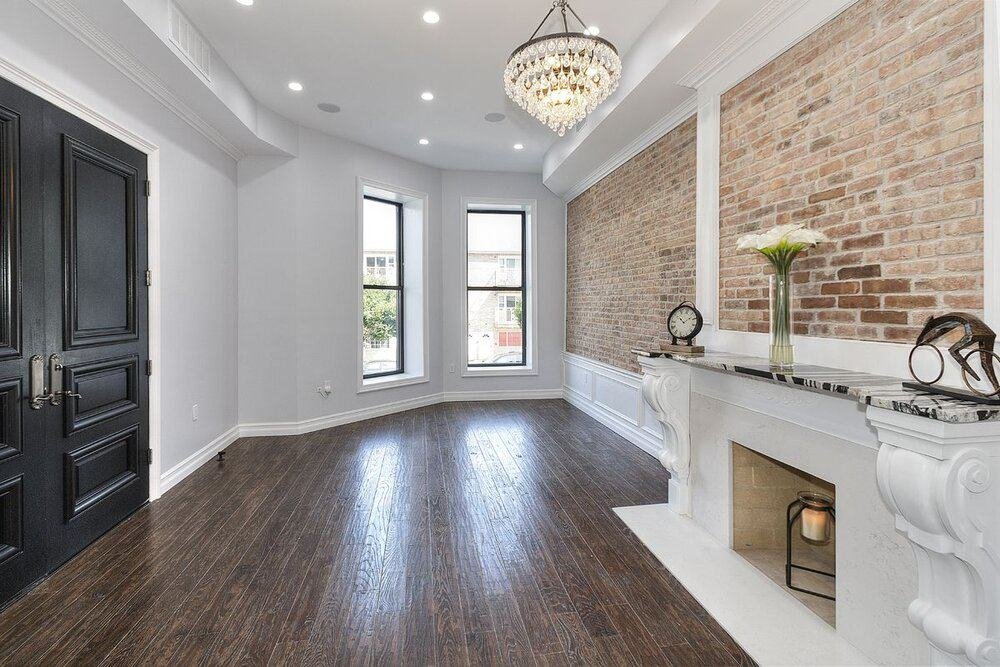Enhance Your Interior Decoration With Comprehensive Shade Examination
The combination of color appointment into interior layout provides an one-of-a-kind possibility to refine and raise the psychological and aesthetic vibration of a room. By involving with an experienced color consultant, you can navigate the complexities of color selection, making certain that your choices not only enhance building features but additionally resonate with personal style and emotional influence.
Benefits of Color Assessment

In addition, shade assessment aids in maximizing natural light and optimizing spatial understanding. Lighter hues can make a room show up even more large, while darker tones develop an intimate setup. Cleveland Metro Painting Specialists. This critical application of shade can considerably affect the total setting of any kind of indoor area
In addition, expert experts have a detailed understanding of ageless standards and existing patterns, making certain that the chosen shades will remain attractive gradually. This foresight can save clients from expensive redesigns in the future. Ultimately, shade examination empowers customers by offering them with a clear vision and instructions, fostering confidence in their design selections and inevitably resulting in an extra effective and satisfying interior decoration end result.
Recognizing Shade Psychology
The relevance of shade psychology in indoor style can not be overemphasized, as it looks into the mental and psychological effects that numerous tones can stimulate in individuals. Shades can affect mood, actions, and even performance, making them a vital consideration in any kind of design job.
For example, cozy colors such as red, orange, and yellow are commonly connected with power and warmth. They can boost sensations of exhilaration and convenience, making them appropriate for social rooms like living areas or cooking areas. On the other hand, trendy colors like blue, eco-friendly, and purple tend to evoke peace and harmony, making them suitable for bed rooms or reflection areas.
In addition, using neutral tones can produce a balanced atmosphere by permitting the bolder colors to stand out without overwhelming the senses. Understanding these mental influences allows designers to produce areas that not only look aesthetically pleasing however likewise promote emotional health.
Including shade psychology right into interior decoration involves a thoughtful selection of hues tailored to the designated feature of each room, inevitably boosting the overall experience for its passengers. This recognition is essential for attaining a practical and unified indoor setting.
The Color Wheel Clarified
It comprises primary colors-- red, blue, and yellow-- that can not be produced by mixing other colors. Tertiary colors result from mixing a primary and a secondary color, leading to hues such as blue and red-orange.
The color wheel aids developers realize the connections in between colors, including complementary, analogous, and triadic systems. look what i found Complementary colors, positioned opposite each other on the wheel, produce dynamic contrasts that can energize a space.
Utilizing the color wheel in interior decoration not only boosts visual charm however additionally stimulates particular feelings and atmospheres, making it a crucial reference for shade appointment. Understanding these connections inevitably equips designers to produce areas that are both aesthetically captivating and useful.
Choosing the Right Palette
A well-chosen color system can link an area, enhance its attributes, and stimulate desired emotions. Different rooms offer different features and require schemes that reflect their desired usage; for instance, peaceful colors such as soft blues or eco-friendlies function well in bed rooms, advertising relaxation.
Light can considerably modify just how colors show up, so it is crucial to assess the room at different times of the day. A harmonious scheme needs to match these attributes, developing a cohesive appearance throughout the area.
When selecting colors, utilize the 60-30-10 regulation, which recommends that 60% of the area must be a leading shade, 30% a secondary shade, and 10% an accent color. This ratio guarantees equilibrium and visual interest (Cleveland Metro Painting Specialists). Example shades on the walls prior to devoting, as this allows you to see exactly how the shades interact with one an additional and the general atmosphere they develop in your indoor layout task.
Functioning With a Color Expert

When dealing with a shade professional, the process commonly begins with an initial consultation. Throughout this meeting, you'll discuss your vision, choices, and the existing elements in your area. The specialist will examine your needs and may advise certain color schemes that line up with your goals.
After developing a direction, the consultant will provide examples and visual help to aid you visualize the suggested color schemes. This action is essential, as colors can appear in different ways under varying illumination problems.
Additionally, a color expert can direct you in selecting corresponding furnishings, art work, and accessories to integrate with your chosen scheme. By collaborating carefully, you can achieve a refined aesthetic that boosts your interiors and produces view it now a welcoming ambience. Eventually, the knowledge of a shade professional can considerably improve the overall effect of your design project.
Verdict
In summary, extensive color assessment offers as an essential device for improving interior layout. By leveraging professional knowledge of color psychology and spatial characteristics, a customized shade combination can be created to stimulate particular emotions and produce an unified environment.
By involving with a seasoned shade expert, you can navigate the intricacies of shade choice, making sure that your selections not just enhance architectural features yet also resonate with personal design and emotional impact. It makes up key colors-- red, blue, and yellow-- that can not be produced by mixing various other shades.The shade wheel assists developers my sources understand the partnerships between colors, consisting of complementary, similar, and triadic schemes.When choosing shades, utilize the 60-30-10 regulation, which suggests that 60% of the area should be a dominant shade, 30% a second shade, and 10% an accent color. By leveraging expert knowledge of shade psychology and spatial characteristics, a customized shade combination can be established to evoke details feelings and create an unified setting.